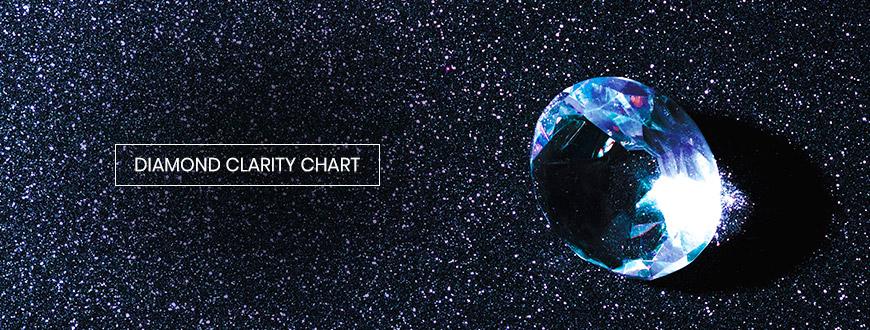Kalyan Wiki

Diamond Clarity Chart
Among the 4C's that determines the quality of diamonds, clarity is an essential factor which indicates how clear the diamond is. During its formation deep under the earth, a diamond develops small imperfections called inclusions and blemishes, which refer to the flaws inside and outside the surface of the diamond, respectively. The lesser the shortcomings inside and out, the higher the clarity.
So let's find out the role of clarity determination in the valuation of diamonds, and how it's done.
While testing the clarity, the diamond is placed face up. Also, the testers use a 10x magnification effect for different clarity characteristics like quantity, size, colour, location, orientation, and visibility of inclusions etc. They use a term called 'diamond plots' which are small maps for each diamond used to map the characteristics and to identify each characteristic individually.
I1 Sl2 SI1 VS2 VS1 VVS2 VVS1 IF FL
In the above chart, the clarity grade increases as we go to the right. FL or flawless has the highest grade of clarity. There are no imperfections at all in this particular diamond which makes it so rare that only 2% of the world's diamonds come under this type.
Second, on the chart is IF or internally flawless where blemishes are visible only when looked through 10x magnification.
Then comes the very very slightly included ones that are VVS1 and VVS2. Here there are tiny inclusions present, which are harder to find even using 10 x magnifications.
The VS1 and VS2 known as Very Slightly included ones have flaws visible under magnification, but not visible to naked eye. On the other hand, the slightly included diamonds or S1 and S2 have inclusions that are visible to the naked eye.
The l1 or Included 1st-degree diamond stones are those where the observer can easily detect flaws without using any magnification device. For the same reason, the I1 has the lowest clarity grade.







